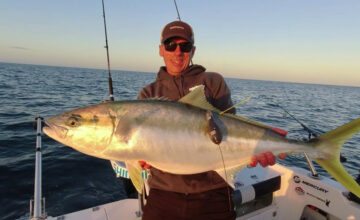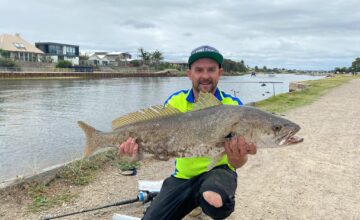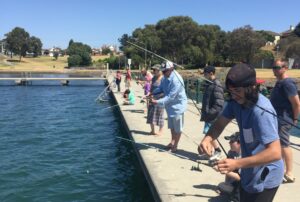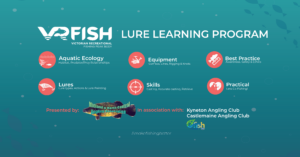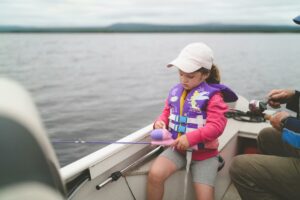October 27, 2015
Dr Julian Pepperell
The involvement of the general public in scientific research has been dubbed ‘Citizen Science’. It happens in many branches of science, with contributions of birdwatchers to censuses of bird populations perhaps the best known example. And in the case of recreational fishing, you couldn’t get a better example of citizen science than the Gamefish Tagging Program run by NSW Department of Primary Industries. This year marks the 42nd year of the program’s operation, during which time over 430,000 fish have been tagged, every one of them by a recreational angler. That Program yields enormous benefits. Without all those recaptured fish, we would know very little about the movements and stock structure of many pelagic species while the tag cards themselves reveal information on relative abundance of fish in time and space that can be related to variable environmental cues such as water temperature, chlorophyll and El Nino patterns.
In addition to tagging, there are many other projects that typify the close cooperation that has developed between game fishing and science. Thinking back over my many years of researching gamefish, one thing I and other scientists have always been able to rely on is support and help from anglers. This help comes in a number of ways – from generously donation of their time, boats and fuel, to waiting patiently at weigh stations while scientists poke, prod and measure their catch.

Anglers look on as scientists measure and take samples from a striped marlin
Several decades ago, boffins like myself with our tape measures and plastic bags were tolerated at game fishing tournament weigh stations, but these days scientific sampling of fish at these events has become the accepted norm. Club officials are happy to have scientists attend and to inform the general public about the research being conducted. Studies facilitated by tournaments cover many aspects of gamefish biology including global genetics, age and growth, feeding ecology, physiology and parasitology. And archived preserved tissue samples routinely taken at such events will continue to be used in all kinds of future studies.
Out on the water, boat owners and skippers are usually only too happy to take scientists on board to deploy electronic and satellite tags on fish, to the extent that hundreds of these kinds of tags have been placed on billfish, sharks, tuna and even dolphinfish over the past decade or so. And not only do anglers provide their boats free of charge, many take time off work just to be part of these exciting studies. The most recent examples of this cooperation in Victorian waters are the post-release survival experiments on southern bluefin tuna and mako sharks conducted by Dr Sean Tracey and Ph.D student Rob French from the University of Tasmania.
Another particularly good example of citizen science in action is a current global genetics study of black marlin being undertaken by University of Queensland student, Sam Williams. By asking anglers in both eastern and western Australia to take small finclips from black marlin before they were released, Sam was overwhelmed with offers of help, and has now received over 200 finclips. DNA analysis of those finclips has revealed distinct population differences between the eastern Indian and western Pacific oceans – a major breakthrough in our understanding of such an important highly migratory pelagic species. This project is now expanding to incorporate the full Indo-Pacific distribution of black marlin, again using finclips taken by recreational anglers wherever possible.
In the future, I can envisage routine help from anglers in much the same way as the tagging program now operates. FTA cards, normally used in medical and forensic science to collect DNA from humans by swabbing the inside of the cheek, have been trialled on sailfish in WA and shown that DNA can be collected from fish simply by dabbing the card on the side or back of a fish before release. And an improvement on taking samples by fin clipping is now being planned whereby a plastic punch tool on the end of a pole can be used to take a small plug of muscle from fish, enabling not just DNA studies but also stable isotope analysis that can reveal what the fish has been eating in the recent past.
Citizen science in game fishing goes back a long way. In my 35 or more years of field research and tournament monitoring, the cooperation from the entire game fishing community has always been nothing short of outstanding. Thanks to everyone who has ever helped, and here’s to many more years of successful and fruitful partnership between science and game fishing.

Fin clips taken from released black marlin by citizen science anglers. Cooperation in this project across Australia has been fantastic.


